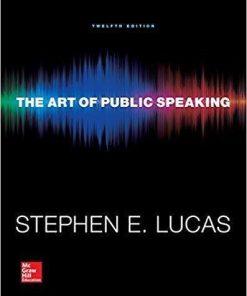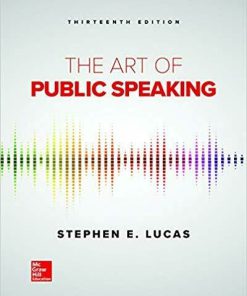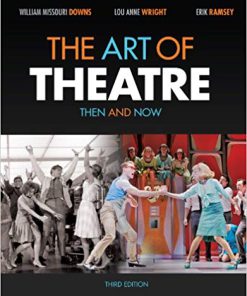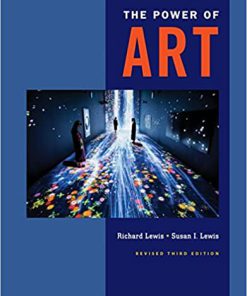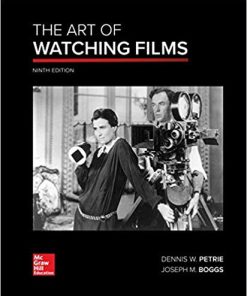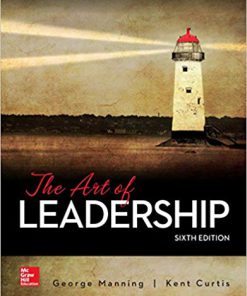(eBook PDF) The Art of Electronics 3rd Edition
$50.00 Original price was: $50.00.$35.00Current price is: $35.00.
(eBook PDF) The Art of Electronics 3rd Edition – Instant Download
(eBook PDF) The Art of Electronics 3rd Edition – Digital Ebook – Instant Delivery Download
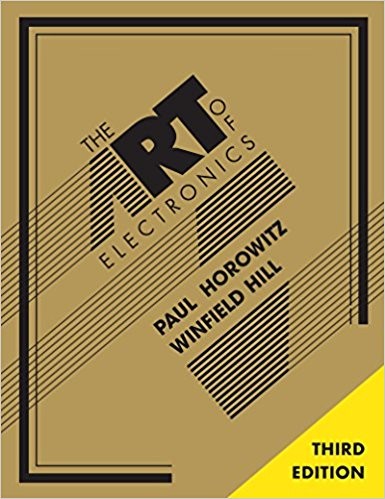
Product details:
- ISBN-10 : 9780521809269
- Author: Paul Horowitz
At long last, here is the thoroughly revised and updated third edition of the hugely successful. It is widely accepted as the best single authoritative book on electronic circuit design, and is in fact so popular that it has been counterfeited – so beware if purchasing from a third party via an online retailer, as you may receive a very inferior physical product. In addition to new or enhanced coverage of many topics, the third edition includes 90 oscilloscope screenshots illustrating the behavior of working circuits, dozens of graphs giving highly useful measured data of the sort that is often buried or omitted in datasheets but which you need when designing circuits, and 80 tables (listing some 1650 active components), enabling intelligent choice of circuit components by listing essential characteristics (both specified and measured) of available parts. The new Art of Electronics retains the feeling of informality and easy access that helped make the earlier editions so successful and popular. It is an indispensable reference and the gold standard for anyone, student or researcher, professional or amateur, who works with electronic circuits.
Table contents:
ONE: Foundations
1.1 Introduction
1.2 Voltage, current and resistance
1.3 Signals
1.4 Capacitors and ac circuits
1.5 Inductors and transformers
1.6 Diodes and diode circuits
1.7 Impedance and reactance
1.8 Putting it all together – an AM radio
1.9 Other passive components
1.10 A parting shot: confusing markings and itty-bitty components
TWO: Bipolar Transistors
2.1 Introduction
2.2 Some basic transistor circuits
2.3 Ebers–Moll model applied to basic transistor circuits
2.4 Some amplifier building blocks
2.5 Negative feedback
2.6 Some typical transistor circuits
THREE: Field-Effect Transistors
3.1 Introduction
3.2 FET linear circuits
3.3 A closer look at JFETs
3.4 FET switches
3.5 Power MOSFETs
3.6 MOSFETs in linear applications
FOUR: Operational Amplifiers
4.1 Introduction to op-amps – the “perfect component”
4.2 Basic op-amp circuits
4.3 An op-amp smorgasbord
4.4 A detailed look at op-amp behavior
4.5 A detailed look at selected op-amp cir- cuits
4.6 Op-amp operation with a single power supply
4.7 Other amplifiers and op-amp types
4.8 Some typical op-amp circuits
4.9 Feedback amplifier frequency compensation
FIVE: Precision Circuits
5.1 Precision op-amp design techniques
5.2 An example: the millivoltmeter, revisited
5.3 The lessons: error budget, unspecified parameters
5.4 Another example: precision amplifier with null offset
5.5 A precision-design error budget
5.6 Component errors
5.7 Amplifier input errors
5.8 Amplifier output errors
5.9 RRIO op-amps: the good, the bad, and the ugly
5.10 Choosing a precision op-amp
5.11 Auto-zeroing (chopper-stabilized) amplifiers
5.12 Designs by the masters: Agilent’s accurate DMMs
5.13 Difference, differential, and instrumentation amplifiers: introduction
5.14 Difference amplifier
5.15 Instrumentation amplifier
5.16 Instrumentation amplifier miscellany
5.17 Fully differential amplifiers
SIX: Filters
6.1 Introduction
6.2 Passive filters
6.3 Active-filter circuits
SEVEN: Oscillators and Timers
7.1 Oscillators
7.2 Timers
EIGHT: Low-Noise Techniques
8.1 “Noise”
8.2 Signal-to-noise ratio and noise figure
8.3 Bipolar transistor amplifier noise
8.4 Finding en from noise-figure specifications
8.5 Low-noise design with bipolar transistors
8.6 Low-noise design with JFETS
8.7 Charting the bipolar–FET shootout
8.8 Noise in differential and feedback amplifiers
8.9 Noise in operational amplifier circuits
8.10 Signal transformers
8.11 Noise in transimpedance amplifiers
8.12 Noise measurements and noise sources
8.13 Bandwidth limiting and rms voltage measurement
8.14 Signal-to-noise improvement by bandwidth narrowing
8.15 Power-supply noise
8.16 Interference, shielding, and grounding
NINE: Voltage Regulation and Power Conversion
9.1 Tutorial: from zener to series-pass linear regulator
9.2 Basic linear regulator circuits with the classic 723
9.3 Fully integrated linear regulators
9.4 Heat and power design
9.5 From ac line to unregulated supply
9.6 Switching regulators and dc–dc converters
9.7 Ac-line-powered (“offline”) switching converters
9.8 A real-world switcher example
9.9 Inverters and switching amplifiers
9.10 Voltage references
9.11 Commercial power-supply modules
9.12 Energy storage: batteries and capacitors
9.13 Additional topics in power regulation
TEN: Digital Logic
10.1 Basic logic concepts
10.2 Digital integrated circuits: CMOS and Bipolar (TTL)
10.3 Combinational logic
10.4 Sequential logic
10.5 Sequential functions available as integrated circuits
10.6 Some typical digital circuits
10.7 Micropower digital design
10.8 Logic pathology
ELEVEN: Programmable Logic Devices
11.1 A brief history
11.2 The hardware
11.3 An example: pseudorandom byte generator
11.4 Advice
TWELVE: Logic Interfacing
12.1 CMOS and TTL logic interfacing
12.2 An aside: probing digital signals
12.3 Comparators
12.4 Driving external digital loads from logic levels
12.5 Optoelectronics: emitters
12.6 Optoelectronics: detectors
12.7 Optocouplers and relays
12.8 Optoelectronics: fiber-optic digital links
12.9 Digital signals and long wires
12.10 Driving Cables
THIRTEEN: Digital meets Analog
13.1 Some preliminaries
13.2 Digital-to-analog converters
13.3 Some DAC application examples
13.4 Converter linearity – a closer look
13.5 Analog-to-digital converters
13.6 ADCs I: Parallel (“flash”) encoder
13.7 ADCs II: Successive approximation
13.8 ADCs III: integrating
13.9 ADCs IV: delta–sigma
13.10 ADCs: choices and tradeoffs
13.11 Some unusual A/D and D/A converters
13.12 Some A/D conversion system examples
13.13 Phase-locked loops
13.14 Pseudorandom bit sequences and noise generation
FOURTEEN: Computers, Controllers, and Data Links
14.1 Computer architecture: CPU and data bus
14.2 A computer instruction set
14.3 Bus signals and interfacing
14.4 Memory types
14.5 Other buses and data links: overview
14.6 Parallel buses and data links
14.7 Serial buses and data links
14.8 Number formats
FIFTEEN: Microcontrollers
15.1 Introduction
15.2 Design example 1: suntan monitor (V)
15.3 Overview of popular microcontroller families
15.4 Design example 2: ac power control
15.5 Design example 3: frequency synthesizer
15.6 Design example 4: thermal controller
15.7 Design example 5: stabilized mechanical platform
15.8 Peripheral ICs for microcontrollers
15.9 Development environment
15.10 Wrapup
APPENDIX A: Math Review
APPENDIX B: How to Draw Schematic Diagrams
APPENDIX C: Resistor Types
APPENDIX D: The ́venin’s Theorem
APPENDIX E: LC Butterworth Filters
APPENDIX F: Load Lines
APPENDIX G: The Curve Tracer
APPENDIX H: Transmission Lines and Impedance Matching
APPENDIX I: Television: A Compact Tutorial
APPENDIX J: SPICE Primer
APPENDIX K: “Where Do I Go to Buy Electronic Goodies?”
APPENDIX L: Workbench Instruments and Tools
APPENDIX M: Catalogs, Magazines, Databooks
APPENDIX N: Further Reading and References
APPENDIX O: The Oscilloscope
APPENDIX P: Acronyms and Abbreviations
People also search:
the art of electronics 3rd edition improved
the art of electronics 3rd edition solution manual pdf
the art of electronics 3rd edition solution
learning the art of electronics 3rd edition
the art of electronics 3rd edition amazon
the art of electronics 3rd edition review
You may also like…
Computers & Technology
(eBook PDF) The Art of Game Design: A Book of Lenses, Third Edition 3rd Edition
Ebook-PDF



